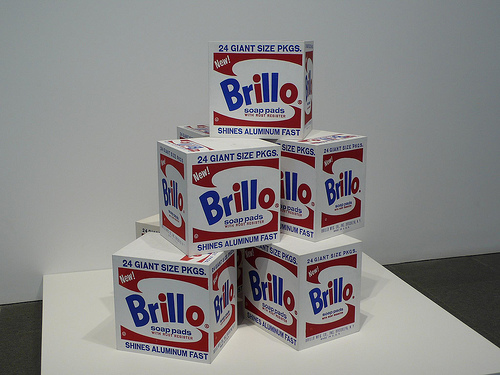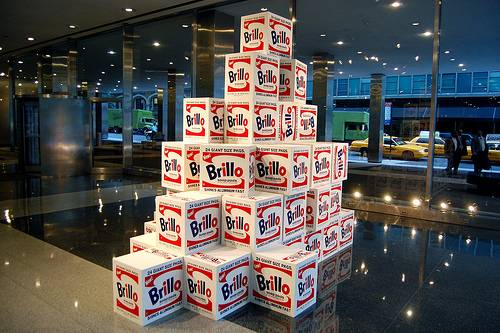
Andy Warhol made a significant statement with Brillo Boxes, first exhibited at New York’s Stable Gallery in 1964. The banal collection of soap boxes seemed indistinguishable from those found at any supermarket. Warhol seemed to be saying that it’s not the visual appeal of an object that determines its status as art; rather, it’s the artist’s intention, his decision to regard an object as art, that confers that status. But this creates some puzzles:
For one, ironically, the original Brillo packaging had itself been designed by an abstract expressionist, James Harvey, who had been driven into commercial art to make a living. Arthur Danto writes, “The question was why Warhol’s boxes should have been worth $200 when that man’s products were not worth a dime.” Does Warhol’s stance mean that concepts entirely trump beauty, that one should properly judge an artwork by what it means rather than how it looks?
If so, is this art?

It’s not Warhol, but “Not Warhol,” by artist Mike Bidlo, displayed in the northeast corner of the lobby at New York’s Lever House in 2010. If Warhol can co-opt Harvey, can Bidlo co-opt Warhol? Why not? “At the time that they were shown, the Brillo Boxes were underappreciated,” Bidlo told the New York Times. “This is a different context and a different audience, but it’s a great opportunity for so many people to see them.”
Where does this end? Museum director Pontus Hultén claimed he’d created more than 100 wooden Brillo boxes in 1968 “according to Andy Warhol’s instructions,” but in 2010 the Andy Warhol Art Authentication Board determined that “there is no known documentation that Warhol authorised their production.” What then is the status of these boxes? If art is in the mind of the creator, how do we resolve a dispute as to the contents of the creator’s mind? By committee?
